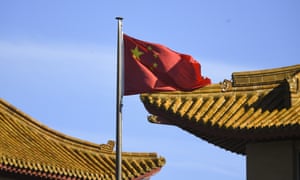What Scott Morrison wanted most of all was a genuine reset in a relationship that is now completely off the rails.
Diplomacy is the art of reading signals, and there was a tell on Monday about how serious this escalating diplomatic crisis is between Canberra and Beijing.
The tell wasn’t Scott Morrison’s demand for an apology and a retraction after an unprofessional and gratuitously offensive provocation from China’s foreign ministry.
"This type of behaviour is not on"
The tell was the Australian prime minister’s very direct plea for dialogue.
Morrison opened with fighting words. “The post made today, the repugnant post made today, of an image, a falsified image, of an Australian soldier threatening a young child with a knife – a post made on an official Chinese government Twitter account, posted by the director deputy general of the ministry of foreign affairs, Mr Lijian Zhao, is truly repugnant”.
It was repugnant, and the prime minister made his terms clear: Australia wanted the offensive post removed immediately, with an apology. The latter seems a stretch. Perhaps Twitter might deal with the former.
But the thing Morrison wanted most of all was a genuine reset in a relationship that is now completely off the rails.
Australia’s prime minister on Monday reached very obviously for a turning point in the conflict: rather than shit-posting on social media as a substitute for diplomacy, perhaps China could engage again through conventional channels? Perhaps someone could pick up the phone?
The words of Morrison’s rapprochement request were weighed carefully. “There are undoubtedly tensions that exist between China and Australia,” the prime minister said. “But this is not how you deal with them”.
“Australia has patiently sought to … address the tensions that exist in our relationship in a mature way, in a responsible way, by seeking engagement at both leader and ministerial level to ensure that we can openly discuss what are clear sources of tension in this relationship.
“The way to deal with those is by engaging directly in discussion and dialogue between ministers and leaders, and despite this terribly offensive post today, I would ask again and call on China to re-engage in that dialogue.
“This is how countries must deal with each other to ensure that we can deal with any issues in our relationship, consistent with our national interests and respect for each other’s sovereignty, not engaging in this sort of deplorable behaviour.
Morrison then hoped this “rather awful event hopefully may lead to the type of reset where this dialogue can be restarted, without condition – that we can sit down and start talking sensibly about these issues, because this type of behaviour is not on”.
For what it might be worth, Morrison also emphasised that the world was watching the twists and turns of China’s wolf warrior diplomacy – the inference being China might think it can detonate a relationship with a minnow like Australia without much negative consequence, but what it was blowing, bit by bit, was its standing in the world, because of the diplomatic irregularities, and the aggression.
With China’s trade retaliation escalating against Australia, and with business increasingly terrified of losing a lucrative export market, Morrison – the prime minister who kicked off this conflagration with his call for an independent inquiry into the origins of the coronavirus – over recent weeks has been trying various forms of de-escalation.
Before we identify the recent de-escalation efforts, just quickly, when I say Morrison kicked off the events that have led us inexorably to this point, it’s important to clarify that the prime minister lit a match on a preset bonfire. Much of the kindling was built up before his time in the Lodge: Australia shirt-fronting China 5G, making noise about foreign interference through the exercise of soft power.
Australia, a small country, created significant global trouble for China, because it framed specific questions about Beijing’s hegemonic ambitions that more powerful nations subsequently began asking. We cast ourselves, in full public view, as the canary in the coalmine. That context, assembled over years, sits behind our present realities.
Now, to de-escalation. Last week Morrison used a speech to the British Policy Exchange to send a public message to Beijing. That message was we don’t want to contain you economically, and when it comes to the bilateral relationship, Australia is not America. We are not deputy sheriff. We have our own distinct objectives.
Related to objectives was endgames.
Morrison last week spelled out Australia’s endgame in the bilateral relationship, which was achieving “strong people-to-people ties, complementary economies and a shared interest in regional development and wellbeing, especially in the emerging economies of south-east Asia”.
In case that wasn’t quite clear enough, Morrison articulated Australia’s endgame again on Monday: peaceful co-existence grounded in mutual respect. “My endgame, and my view, is the same today as it was in John Howard’s time – the happy coexistence of two partners under our comprehensive strategic partnership – but one that respects the sovereign interests of both countries”.
Being clear about your motives and intentions certainly can’t hurt, particularly if Australia feels there is now so much static around that China can no longer read the room clearly.
But Australia’s problem is not that we don’t know what our endgame is. Our problem is we don’t know what China’s endgame is – and Morrison’s problem is we are no closer to having an answer to that question.

No comments:
Post a Comment